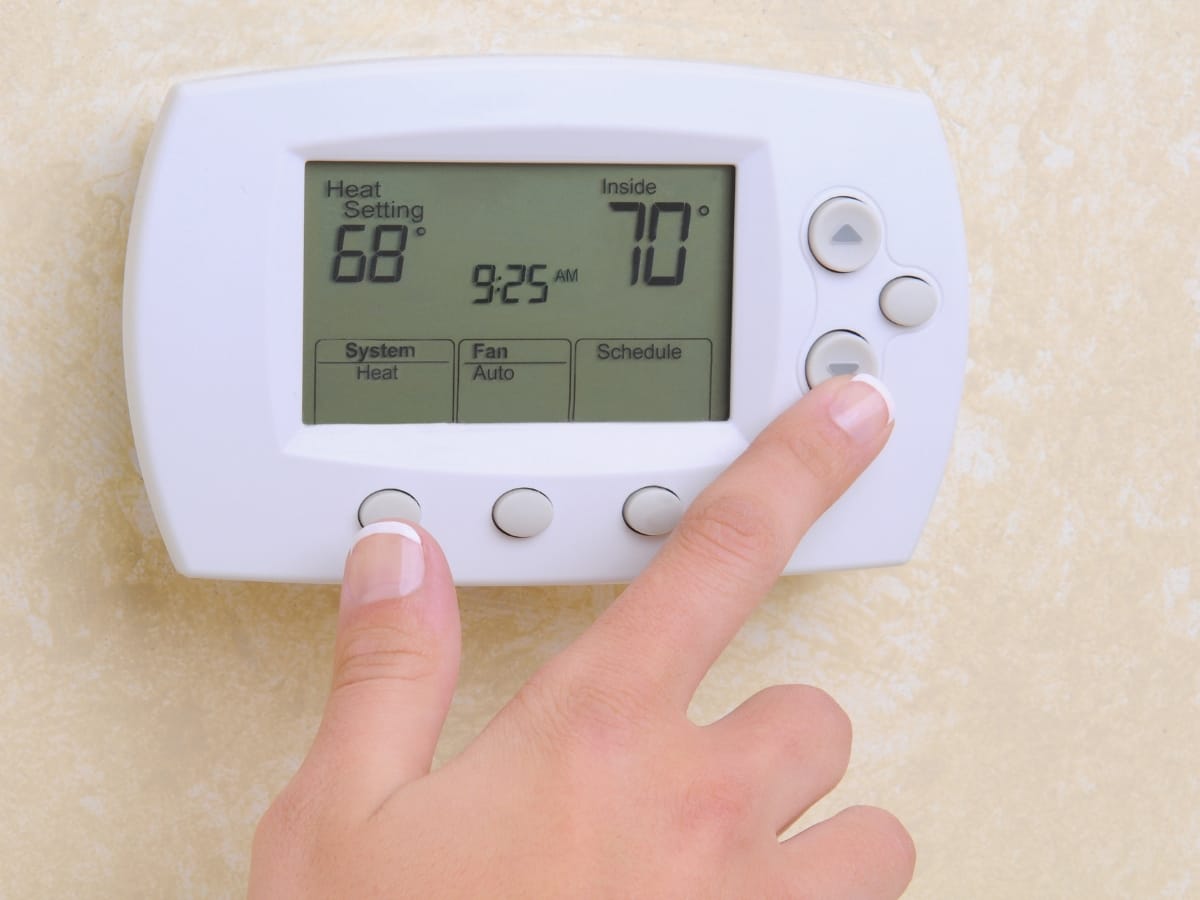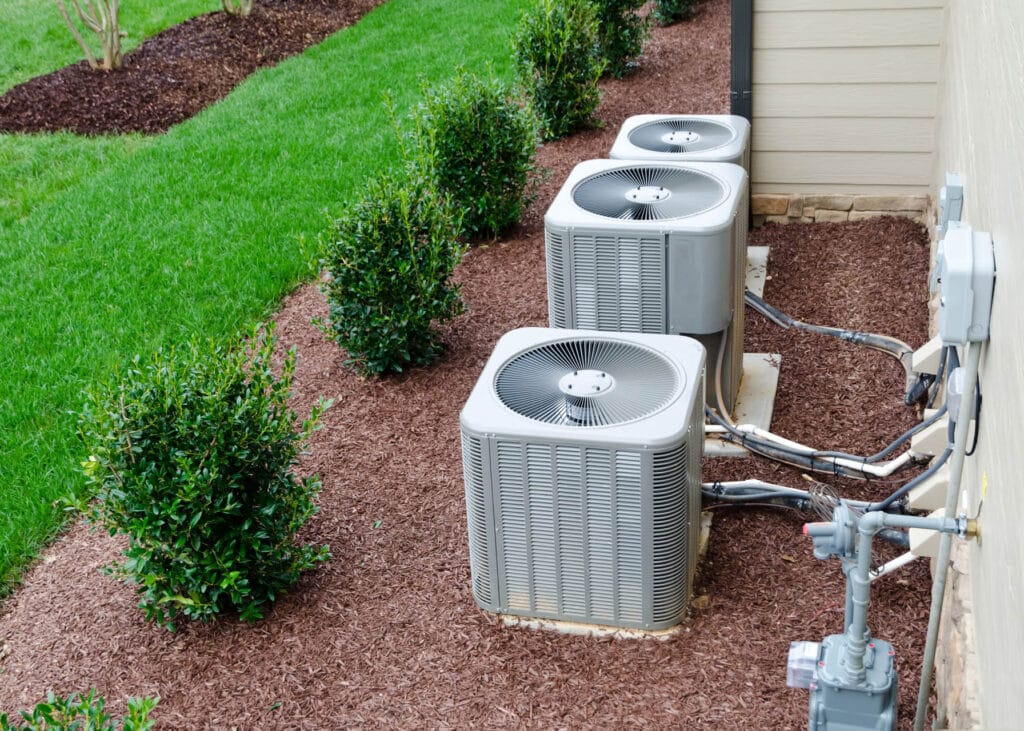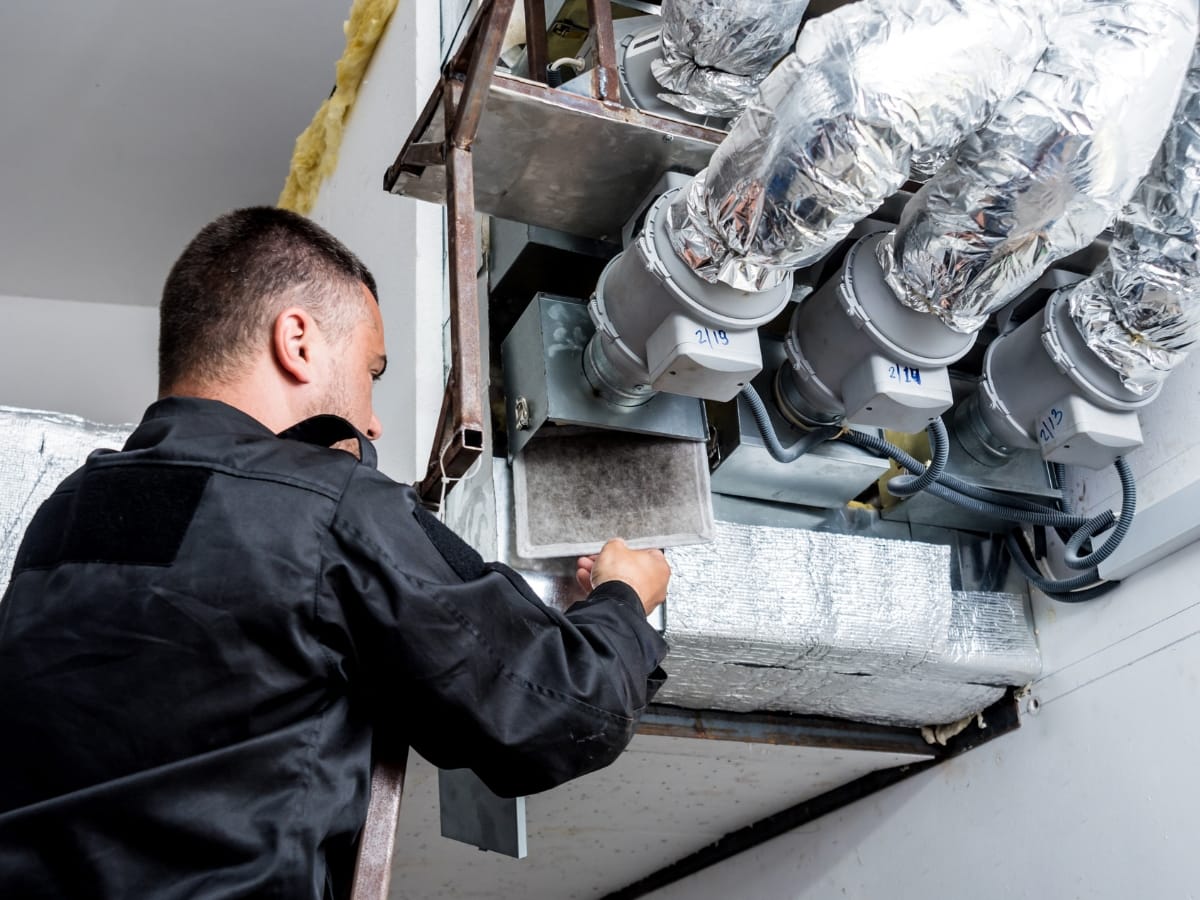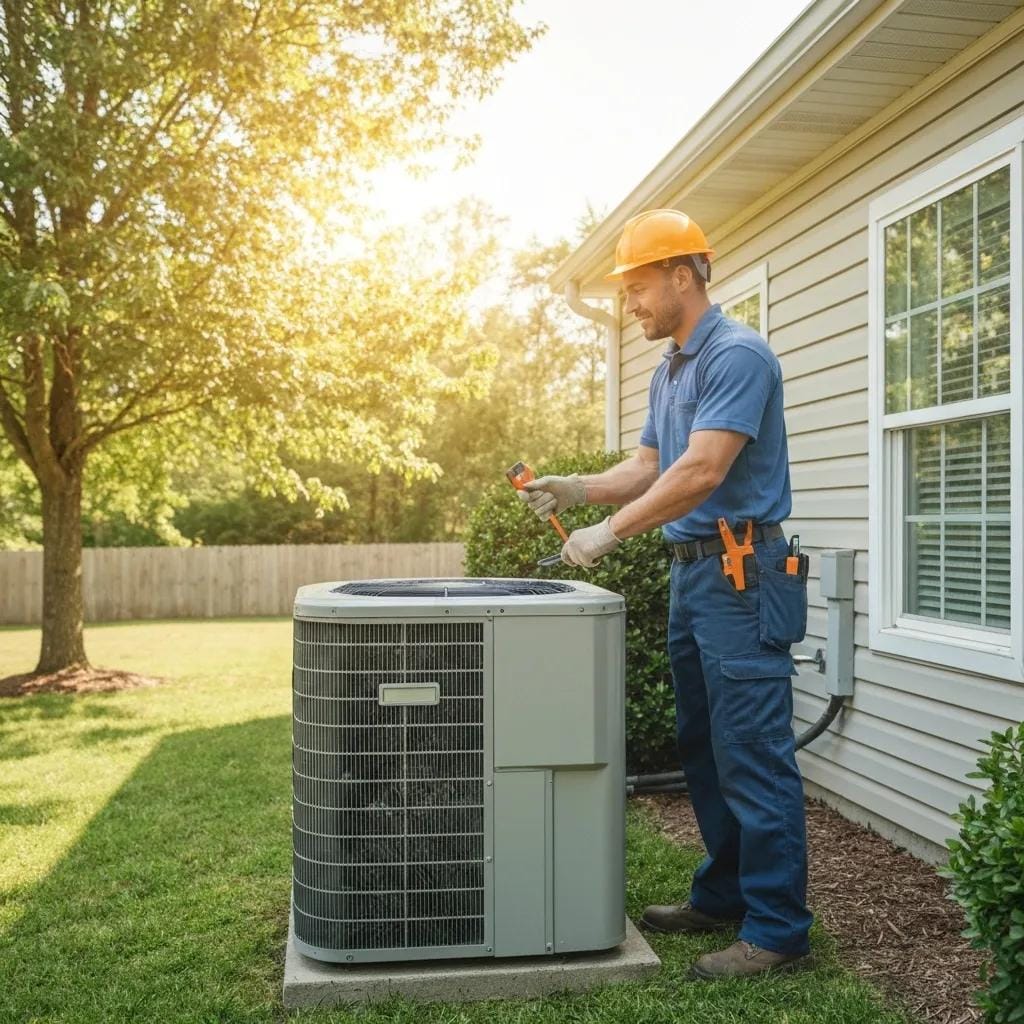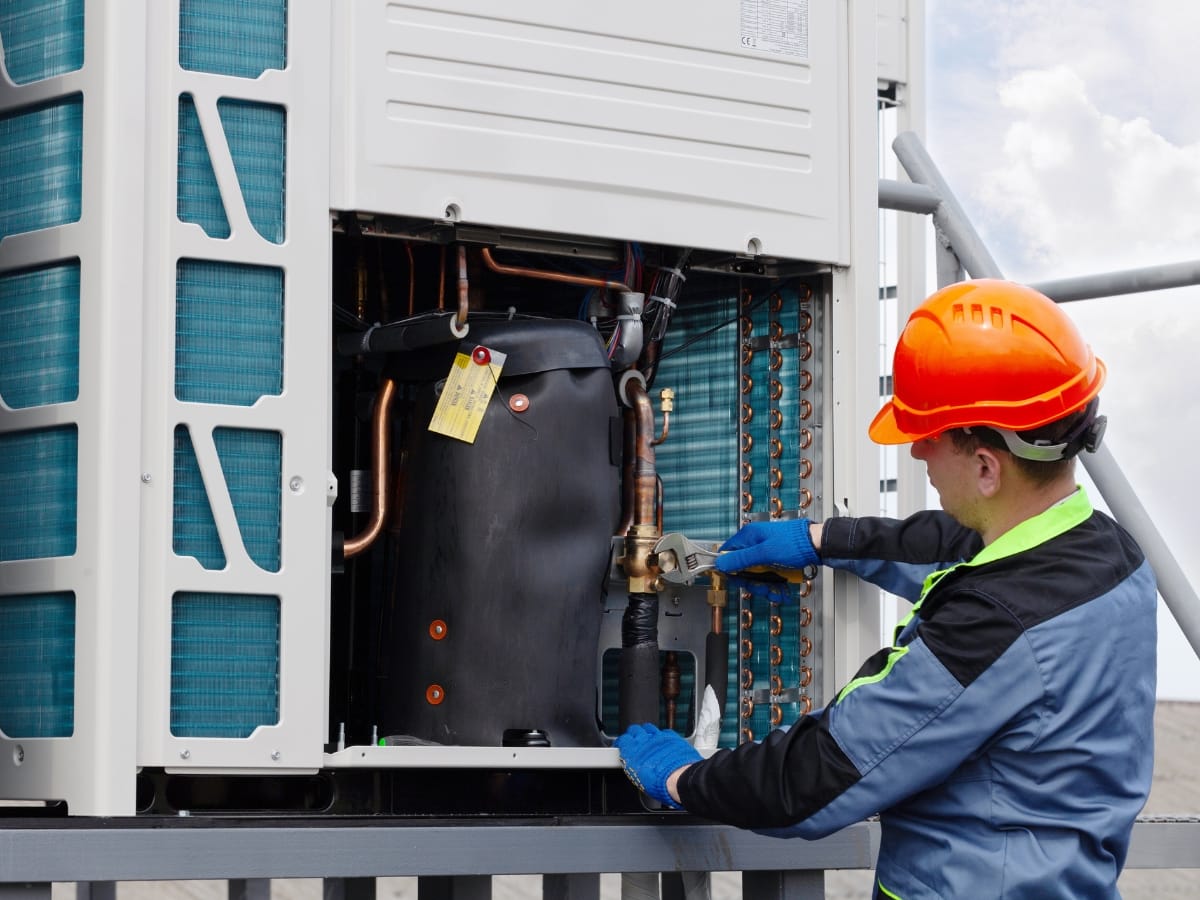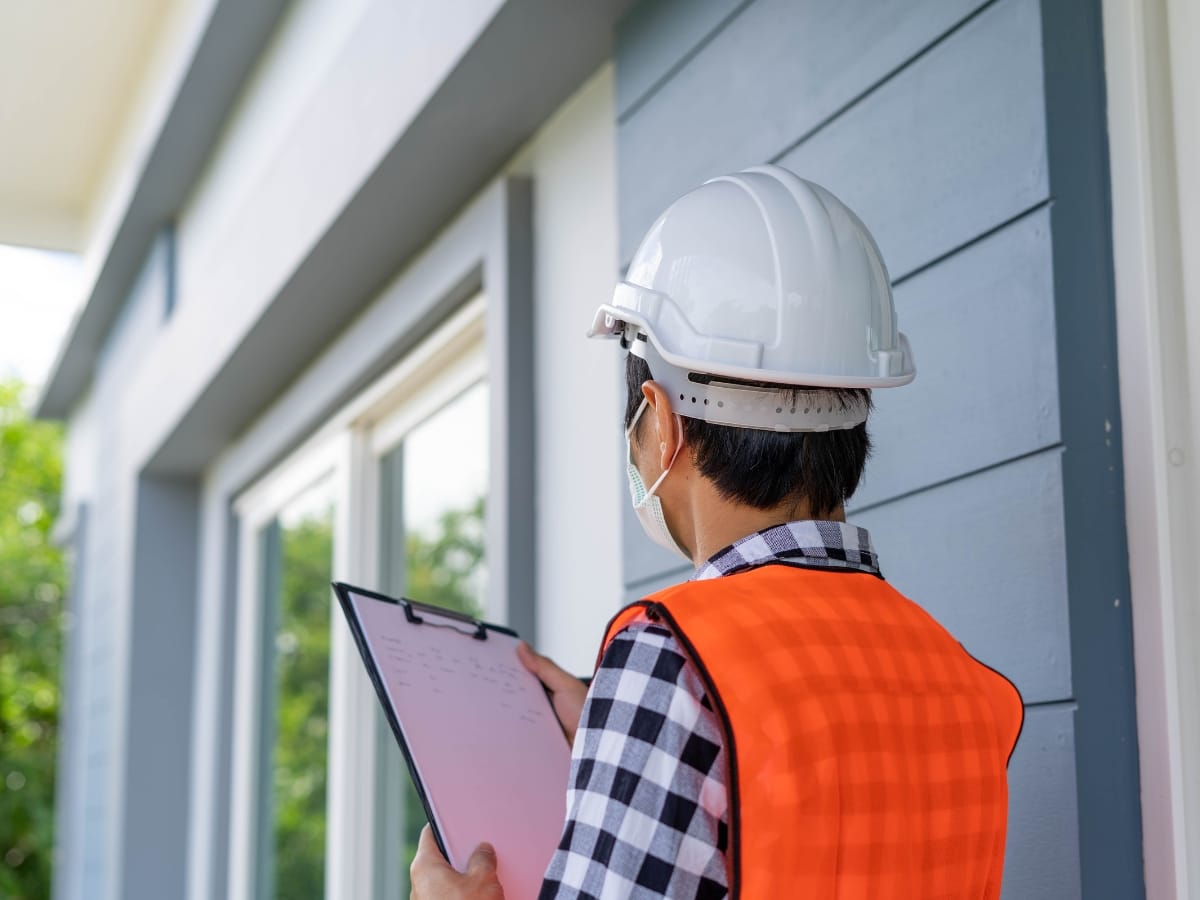Upgrading to a programmable thermostat is one of the simplest and most effective ways to reduce your energy bills—but how exactly does it lead to significant HVAC savings? By automatically adjusting the temperature when you’re asleep or away, these smart devices ensure your system isn’t working overtime to heat or cool, which can drastically cut energy waste. In this guide, we’ll break down the science behind the savings, from the impact of temperature setbacks on system runtime to how modern features like geofencing and learning algorithms optimize comfort and efficiency, so you can see exactly how a small investment in a programmable thermostat can lead to lower costs and a greener property.
Programmable Thermostat HVAC Savings Explained for Homeowners
What Exactly Is a Programmable Thermostat and How Does It Operate?
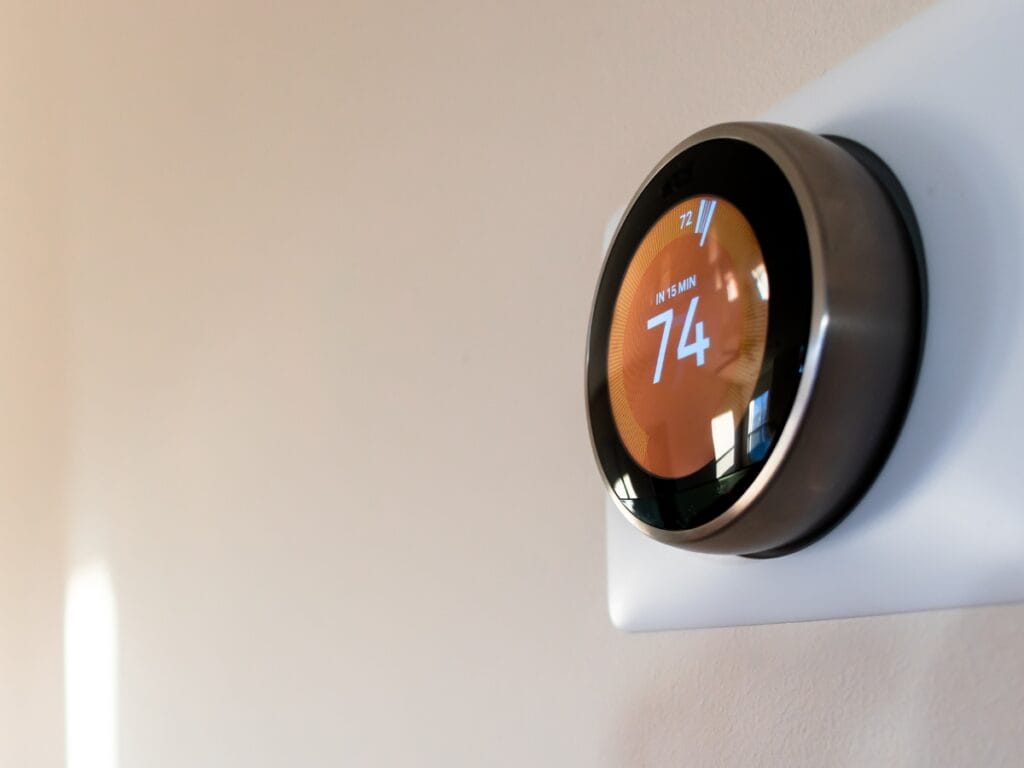
A programmable thermostat is essentially the control center of your heating and cooling system. It lets you automate temperature settings based on a schedule, so you no longer need to adjust the thermostat manually throughout the day. By programming specific temperatures for different times, days, or even seasons, you can keep your building comfortable when it’s occupied and save energy when it’s not. For example, lowering the temperature by 7 to 10 degrees during off-hours can significantly reduce utility costs without affecting comfort during business operations.
The thermostat communicates directly with your HVAC system. When the indoor temperature moves away from the setpoint you’ve programmed, it sends a signal to turn the system on or off until the temperature returns to the desired level. This automation ensures a consistent indoor climate while preventing the system from running longer than necessary, which is one of the main reasons businesses see energy savings after switching to programmable controls.
What Are the Core Features of Programmable Thermostats?
The appeal of a programmable thermostat lies in its ability to combine convenience, efficiency, and control. One of the most useful features is customizable scheduling. You can set different temperature targets for various times of the day or days of the week, which is ideal for properties with specific occupancy patterns. A weekday schedule, for example, might focus on comfort during office hours and energy savings overnight, while a weekend setting could maintain a different temperature profile for limited staff or customers.
Manual override features give you flexibility when unexpected situations arise. You can temporarily adjust the temperature without altering your main schedule, ensuring immediate comfort without losing your programmed settings. Some models also include smart recovery, which learns how long your HVAC system takes to reach the desired temperature and adjusts start times accordingly. That means the space is at the perfect temperature exactly when people arrive, without unnecessary runtime.
How Does a Programmable Thermostat Control Your HVAC System?
Think of the thermostat as the command center for your building’s climate. When the indoor temperature drifts from your programmed setting, the thermostat sends a low-voltage signal to your HVAC control board. This signal activates or deactivates the heating, cooling, or fan components as needed. Because this process is automated, the system only runs when it should, maintaining consistent conditions while minimizing wasted energy.
This level of precision is especially important in commercial spaces, where maintaining steady indoor temperatures can impact productivity, protect equipment, and enhance customer comfort. Over time, these efficiencies can translate into noticeable reductions in energy use and operating costs.
What Are the Different Types of Programmable Thermostats Available?
There are several types of programmable thermostats designed to suit different scheduling needs. A 7-day model offers the most flexibility, allowing you to set a unique temperature schedule for each day of the week. This is useful for businesses with irregular hours or fluctuating occupancy. A 5-2 model uses one schedule for weekdays and another for weekends, ideal for standard office environments. A 5-1-1 format combines both approaches, with a single weekday schedule and separate settings for Saturday and Sunday.
Each of these options provides control and customization, enabling businesses to tailor climate settings to their exact routines. By integrating a programmable thermostat for your commercial property, you can strike the right balance between comfort and cost savings, ensuring your space remains efficient and welcoming all year long.
Just How Much Can a Programmable Thermostat Save You?

When used correctly, a programmable thermostat can deliver significant energy savings by automatically adjusting your heating and cooling based on your daily schedule. Instead of running your HVAC system at full capacity when no one is home or while you’re asleep, the thermostat makes precise adjustments that keep your home comfortable when it matters and save energy when it doesn’t. Many homeowners see reductions of 10 to 33 percent on annual heating and cooling costs, with most averaging around 10 to 15 percent on their utility bills. These savings add up quickly and can make a noticeable difference in overall household expenses.
What Are the Typical Energy Savings for Homeowners?
The financial impact of installing and properly programming a thermostat can be substantial. On average, homeowners see a reduction of 10 to 15 percent in heating costs and 10 to 12 percent in cooling costs. When combined, that can mean total seasonal savings of up to 33 percent. The key to achieving these results is consistent use of programmed schedules and avoiding frequent manual overrides, which can interrupt the energy-saving cycle. By letting the system do its job automatically, you maintain ideal temperatures without wasting energy.
How Do Temperature Setbacks Reduce Energy Consumption?
Temperature setbacks are one of the most effective ways a programmable thermostat cuts energy use. They work by decreasing the difference between your home’s indoor temperature and the outdoor environment. A smaller temperature gap slows the rate of heat transfer, which means your HVAC system doesn’t have to work as hard or run as often.
For example, lowering your thermostat setting by 7 to 10 degrees while you’re away during the day reduces the thermal load on your home. This means less heat escapes in winter and less heat enters in summer. Because the system cycles on less frequently, it consumes less energy, reducing both electricity and fuel use. Programming your thermostat to make these adjustments during off-peak hours can also help you avoid higher energy rates that come with peak demand times, further increasing your savings.
What Do Real-World Savings Look Like in Metro Atlanta?
The savings from a programmable thermostat become even clearer when applied to typical Metro Atlanta energy costs. A simple 7-degree setback for 8 hours a day can save between $15 and $20 per month, or roughly $180 to $240 per year. Even a weekend-only schedule that lowers the temperature on Saturday and Sunday when you’re out can save $5 to $8 monthly, or up to $96 annually. For households that implement a comprehensive heating and cooling program year-round, monthly savings can range from $18 to $25, adding up to $216 to $300 each year.
These numbers show how small, consistent changes in temperature settings can produce measurable reductions in utility bills over time. By programming your thermostat to match your daily routines, you turn temperature control into a powerful energy-saving tool without sacrificing comfort.
What Are the Key Benefits of Programmable Thermostats for Homeowners?
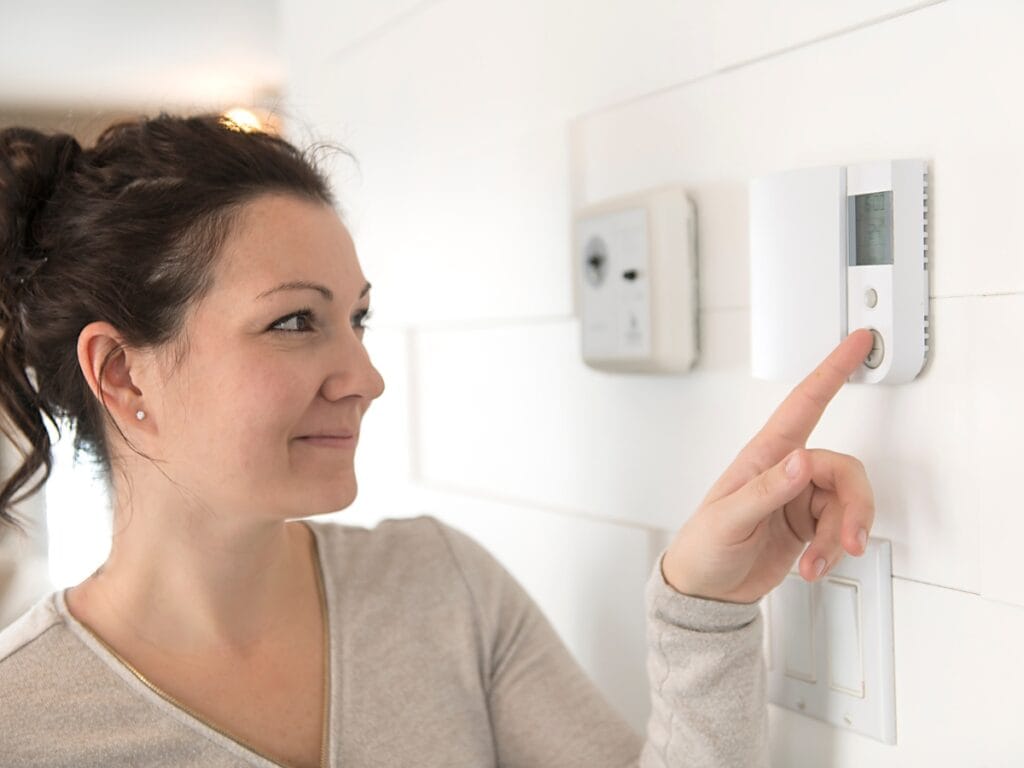
A programmable thermostat offers more than just convenience. It provides measurable energy savings, improves home comfort, extends the lifespan of your HVAC system, and even benefits the environment. Automatically adjusting your home’s temperature based on your schedule eliminates unnecessary energy use while keeping your indoor environment comfortable and consistent. Whether you’re focused on reducing monthly utility bills or creating a more efficient home, this simple device can make a noticeable difference.
How Do Programmable Thermostats Elevate Home Comfort?
One of the biggest advantages of a programmable thermostat is how it improves daily comfort. Instead of manually adjusting the temperature throughout the day, you can set a schedule that matches your routine. That means waking up to a warm home on cold mornings or walking into a cool, refreshing space after a long summer day, without touching a dial. Because the system anticipates and adjusts to your preferences ahead of time, it eliminates sudden temperature swings and energy-intensive recovery periods. The result is a more stable indoor climate that keeps every room comfortable at the right time.
This automation also helps households with varying schedules. For example, you can program lower temperatures while you’re at work and have the system return to a comfortable level just before you arrive home. Over time, these automatic adjustments not only make your living space more pleasant but also create a more predictable and energy-efficient home environment.
How Do Programmable Thermostats Contribute to HVAC System Longevity?
Beyond comfort and savings, a programmable thermostat also supports the long-term health of your HVAC system. Frequent on-and-off cycling is one of the main causes of wear and tear on components like compressors, fans, and burners. By managing temperature changes more efficiently and reducing the number of unnecessary cycles, the thermostat helps minimize mechanical stress.
This smoother operation means parts last longer, maintenance needs are reduced, and costly repairs can often be delayed. In many cases, the improved efficiency can extend the overall lifespan of your heating and cooling system. That translates into additional savings over time, not just from lower energy use but also from fewer breakdowns and postponed replacement costs.
What Environmental Advantages Do Programmable Thermostats Offer?
A programmable thermostat doesn’t just help your wallet and your comfort; it’s also good for the environment. Reducing energy use lowers the demand placed on power plants, which decreases greenhouse gas emissions from electricity generation and natural gas consumption. Even small reductions in household energy use can add up to a significant environmental impact when multiplied across many homes.
This improved efficiency aligns with broader sustainability goals, from lowering your household’s carbon footprint to supporting community-wide energy conservation efforts. Making this simple upgrade is a practical step toward a greener home without sacrificing comfort or convenience.
Programmable Thermostat vs. Smart Thermostat: Which Delivers Superior Savings?

Programmable thermostats excel at automating fixed schedules, while smart thermostats take it a step further with learning algorithms, remote access capabilities, and advanced diagnostic features. Both types are excellent for saving energy, but the best choice for you depends on your personal preferences and your household’s unique dynamics.
What Key Features Differentiate Smart Thermostats from Programmable Models?
Let’s break down the key distinctions:
| Thermostat Type | Key Feature | Potential Savings Impact |
|---|---|---|
| Programmable | Pre-set weekly scheduling | 10–33 percent when programmed and used consistently |
| Smart (Wi-Fi Enabled) | Remote control via smartphone app | An additional 3–5 percent through adaptive learning and remote adjustments |
| Smart (Learning) | Learns your occupancy patterns automatically | Up to 23 percent compared to basic, non-programmable models |
Which Thermostat Type is the Best Fit for Different Homeowner Profiles in Metro Atlanta?
- For Those with Predictable Routines: Programmable models are an excellent choice for families or retirees who maintain consistent daily and weekly schedules.
- For Those with Variable Schedules: Smart thermostats are ideal for adapting to the unpredictable or shifting schedules common in hybrid work environments or busy households.
- For the Tech-Savvy Homeowner: Smart devices seamlessly integrate with home automation systems and offer the convenience of remote monitoring and control.
- For Those Seeking Simplicity: Basic programmable units provide straightforward, significant cost reductions without a steep learning curve.
What Are the Cost and Convenience Differences Between Programmable and Smart Thermostats?
You can typically expect to invest between $50–$150 for a programmable thermostat, which requires manual programming. Smart thermostats, on the other hand, range from $150–$300 and come with app-based setup and occasional software updates. While basic programmable models can often be a DIY installation, professional installation is recommended for both types to ensure proper wiring and optimal performance.
How Does Professional Programmable Thermostat Installation Maximize Your Savings?
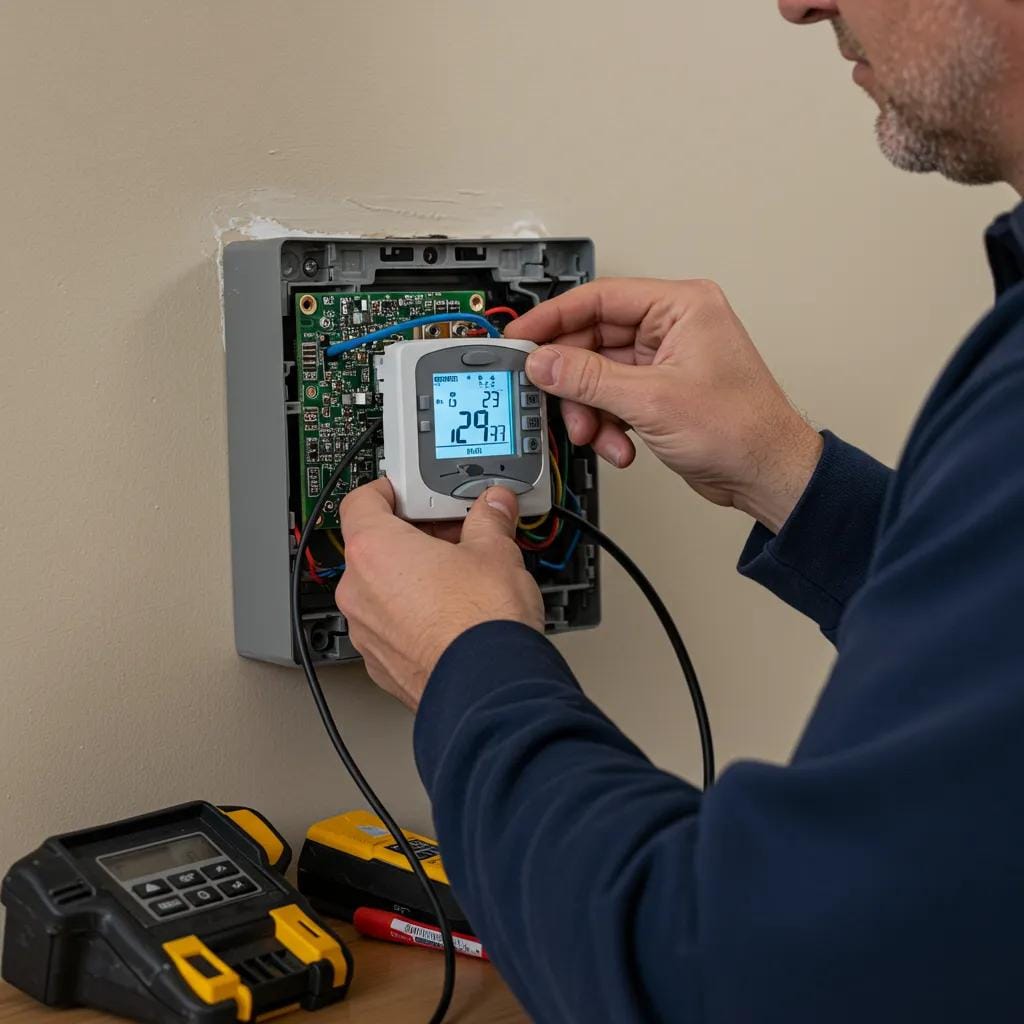
A programmable thermostat can deliver impressive energy savings, but only if it’s installed and configured correctly. Professional installation ensures the device operates as intended, accurately controls your HVAC system, and delivers the full efficiency it’s designed to provide. Mistakes made during DIY installation, such as incorrect wiring or poor calibration, can limit performance and reduce potential savings. Having a trained technician handle the setup guarantees that your thermostat functions properly from day one, maximizing comfort and minimizing energy waste.
Why Is Professional Installation Essential for Optimal Thermostat Performance?
The installation process directly affects how well a programmable thermostat performs. Proper wiring is essential because even a small error can lead to malfunctions, short cycling, or inconsistent temperature control. Professionals also verify calibration, ensuring the thermostat reads and responds to room temperatures accurately. This precision matters because even a slight misreading can cause your system to run longer than necessary, raising energy costs.
Another key advantage of professional installation is customized programming. Technicians can tailor your thermostat’s schedule to match your household’s daily routine and adjust for local climate patterns. This level of detail helps the system run more efficiently, maintaining comfort when you’re home and saving energy when you’re not. The result is a smoother, more reliable operation and more consistent savings over time.
What to Expect During a Professional Installation
A thorough installation involves more than just mounting the thermostat on the wall. Technicians assess your current HVAC system and ensure compatibility with your new device. They handle the wiring and verify that all connections are secure and functioning correctly. Once installed, the thermostat is carefully calibrated so that the temperature readings match the actual indoor conditions.
Professionals also take the time to program initial schedules tailored to your lifestyle, ensuring the thermostat delivers comfort and efficiency from the start. Many will walk you through the device’s features and settings, helping you understand how to make adjustments in the future. This hands-on support minimizes user error and ensures you get the most out of your investment.
Can Rebates and Incentives Lower the Cost of a Programmable Thermostat?
In many areas, including Georgia, utility companies and state programs offer rebates and incentives for installing energy-efficient devices like programmable thermostats. For example, Georgia Power’s residential energy efficiency programs may provide rebates of up to $75 for qualifying models. Multifamily properties often have access to separate incentive programs that can offset even more of the installation cost.
It’s also worth watching for seasonal promotions from manufacturers and utility providers, which are often available during peak energy-use months. When combined with the ongoing savings from reduced utility bills, these rebates can shorten the payback period and make upgrading to a programmable thermostat an even smarter investment.
A programmable thermostat is one of the most cost-effective ways to improve your home’s energy efficiency, but professional installation is key to unlocking its full potential. Proper wiring, calibration, and programming ensure accurate temperature control, reliable performance, and maximum savings. Pair those benefits with available rebates, and the return on investment becomes even stronger. By choosing professional installation, you can enjoy a more comfortable home, lower utility bills, and a heating and cooling system that operates at peak efficiency year-round.
How Can You Maximize Energy Savings with Your Programmable Thermostat?
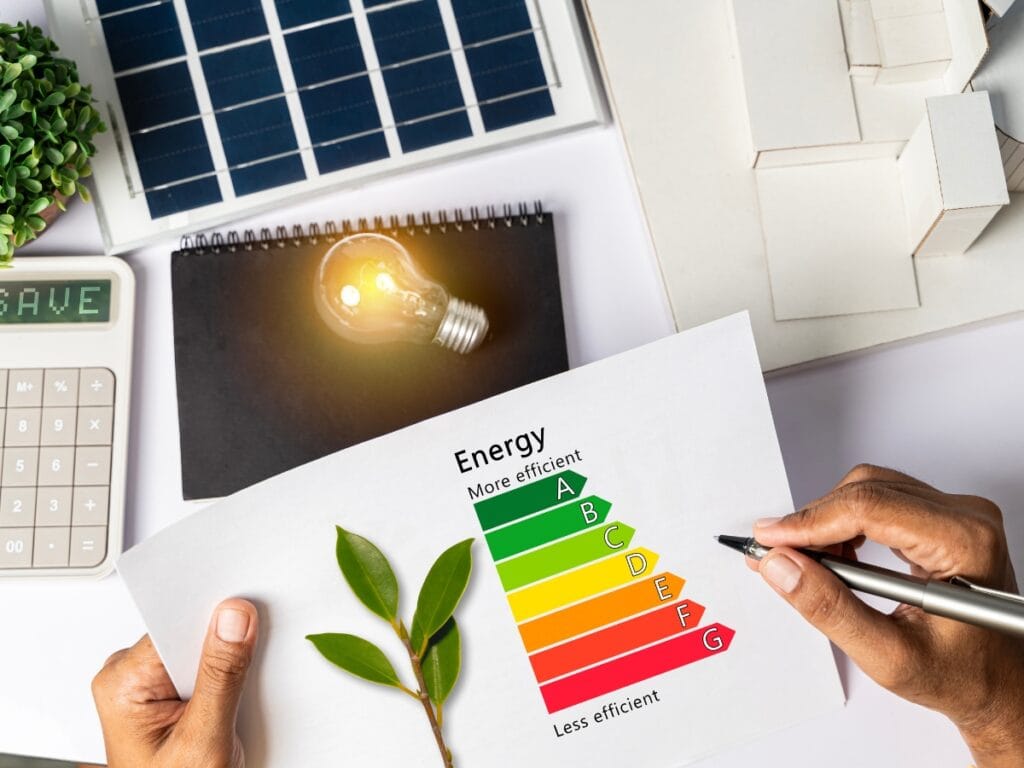
A programmable thermostat is one of the easiest ways to reduce energy costs, but getting the most out of it requires more than just installing the device. Smart scheduling, seasonal adjustments, and regular maintenance all play a role in turning basic temperature control into long-term savings. By using your thermostat strategically, you can significantly cut heating and cooling expenses without sacrificing comfort.
What Are the Best Practices for Efficient Thermostat Programming?
The key to maximizing energy efficiency lies in how you program your thermostat. One of the most effective strategies is taking advantage of 7-day scheduling. This allows you to customize settings for each day of the week, aligning temperature changes with your household’s routines. If your schedule varies between weekdays and weekends, this feature ensures your system only works when it needs to.
Another proven method is implementing temperature setbacks of around 7 to 10 degrees for at least eight hours each day. According to the U.S. Department of Energy, this simple step can lead to significant savings over the course of a year. Minimizing manual overrides is also important. Frequent changes disrupt the programmed schedule and force your HVAC system to work harder, wasting energy. Instead, use temporary “hold” features for short-term adjustments. Finally, revisit your settings regularly and make updates as your routines shift with the seasons. Consistent attention to scheduling keeps your system operating efficiently year-round.
How Should You Adjust Your Thermostat Seasonally for Heating and Cooling?
Adapting your thermostat settings to the time of year can make a big difference in both comfort and cost. During summer, setting the temperature to about 78 degrees when you’re home and raising it to 85 degrees when you’re away strikes a good balance between comfort and energy use. In winter, lowering the thermostat to around 68 degrees when occupied and dropping it to 60 degrees when the house is empty or everyone is asleep helps reduce heating costs without sacrificing warmth.
These seasonal adjustments reduce the strain on your HVAC system and cut down on unnecessary runtime. By aligning your thermostat settings with outdoor conditions and occupancy patterns, you create a more efficient and responsive climate control system that works smarter, not harder.
When Is It Time to Consider Upgrading or Maintaining Your Thermostat?
Even with proper use, a programmable thermostat should be maintained and periodically evaluated to ensure peak performance. Display errors, inaccurate readings, or unresponsive controls often point to sensor or wiring issues that require attention. If your model no longer supports software updates, you may be missing out on newer energy-saving features available in modern thermostats.
It’s also worth upgrading if your current thermostat uses outdated scheduling formats or lacks advanced features like learning capabilities and remote control. Additionally, when you install a new high-efficiency HVAC system, pairing it with an upgraded thermostat ensures both components work together for maximum efficiency.
The Bottom Line
A programmable thermostat is only as effective as the way you use it. Smart scheduling, seasonal adjustments, and timely maintenance are essential to maximizing savings and improving comfort. By following these best practices and knowing when to upgrade, you can turn your thermostat into a powerful tool for reducing energy bills, lowering environmental impact, and keeping your home comfortable all year long.
What Are the Most Common Questions About Programmable Thermostats?
Homeowners often want to know if a programmable thermostat really delivers on its energy-saving promises, how much money they can expect to save, and whether it’s worth the investment compared to other options. Understanding how these devices work and what they offer can help you make an informed decision about upgrading your home’s temperature control system.
Do Programmable Thermostats Actually Save Money?
Yes, they do. Research from the U.S. Department of Energy shows that consistently lowering or raising your thermostat by about 7 to 10 degrees for at least eight hours a day can reduce heating and cooling costs by around 10 percent each year. This simple change can translate into noticeable monthly savings without compromising comfort. The key is consistency: the more reliably you follow your programmed schedule, the more effective the thermostat will be at cutting energy use.
How Much Can a Programmable Thermostat Save a Homeowner in Atlanta?
For Metro Atlanta homeowners, a programmable thermostat can lead to annual savings of roughly 10 to 15 percent on heating and cooling costs. That often adds up to about $180 to $300 per year, depending on your home’s size, insulation, and energy usage habits. Setting schedules that align with when your home is occupied, combined with seasonal adjustments, helps you achieve the maximum benefit. Over time, these savings can add up significantly and make a real difference in your household budget.
Are Programmable Thermostats a Worthwhile Investment?
In most cases, a programmable thermostat pays for itself within one to two years through lower utility bills alone. The upfront cost is relatively modest compared to the long-term savings it can deliver. Additional incentives, such as rebates offered by local energy providers, can make the investment even more attractive. Beyond cost savings, the ability to maintain consistent comfort while reducing your environmental impact adds to the overall value of upgrading your thermostat.
What Is the Difference Between a Smart and a Programmable Thermostat?
While both options allow you to schedule temperature changes, smart thermostats offer more advanced features. A standard programmable thermostat follows a fixed schedule that you set manually. A smart thermostat adds Wi-Fi connectivity, allowing you to adjust settings remotely from a smartphone or tablet. Many smart models also include learning capabilities that adapt to your daily routines and optimize energy use automatically. These features can lead to an additional 3 to 5 percent in savings compared to traditional programmable models.
How Do I Troubleshoot Common Programmable Thermostat Issues?
If your programmable thermostat isn’t working as expected, there are a few basic steps you can take before calling a technician. Check that all wiring connections are secure and that the unit has working batteries if applicable. Review your programmed schedule to ensure setback periods are entered correctly. If the display is inaccurate or the system isn’t responding, recalibration may be needed. In some cases, professional servicing can resolve persistent issues and restore full functionality.
Conclusion
A programmable thermostat is one of the simplest and most effective upgrades for reducing energy waste and lowering your utility bills, offering customized comfort without the hassle. At Ace Tech Heating & Cooling, we help homeowners select and install the right smart thermostat for their lifestyle, ensuring seamless integration with their HVAC system for maximum savings. Ready to start saving? Call (404) 369-9100 or visit our website for a free quote—and let our experts optimize your home’s efficiency and comfort today.

